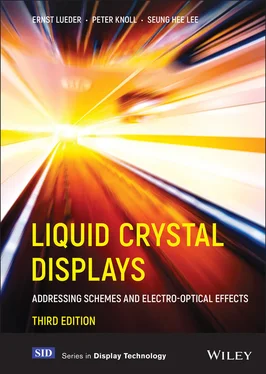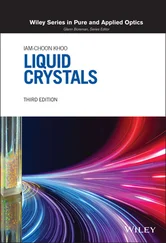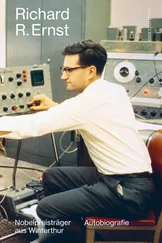For the homeotropic alignment of the molecules, an obliquely evaporated or sputtered SiO 2orientation layer is again a good solution.
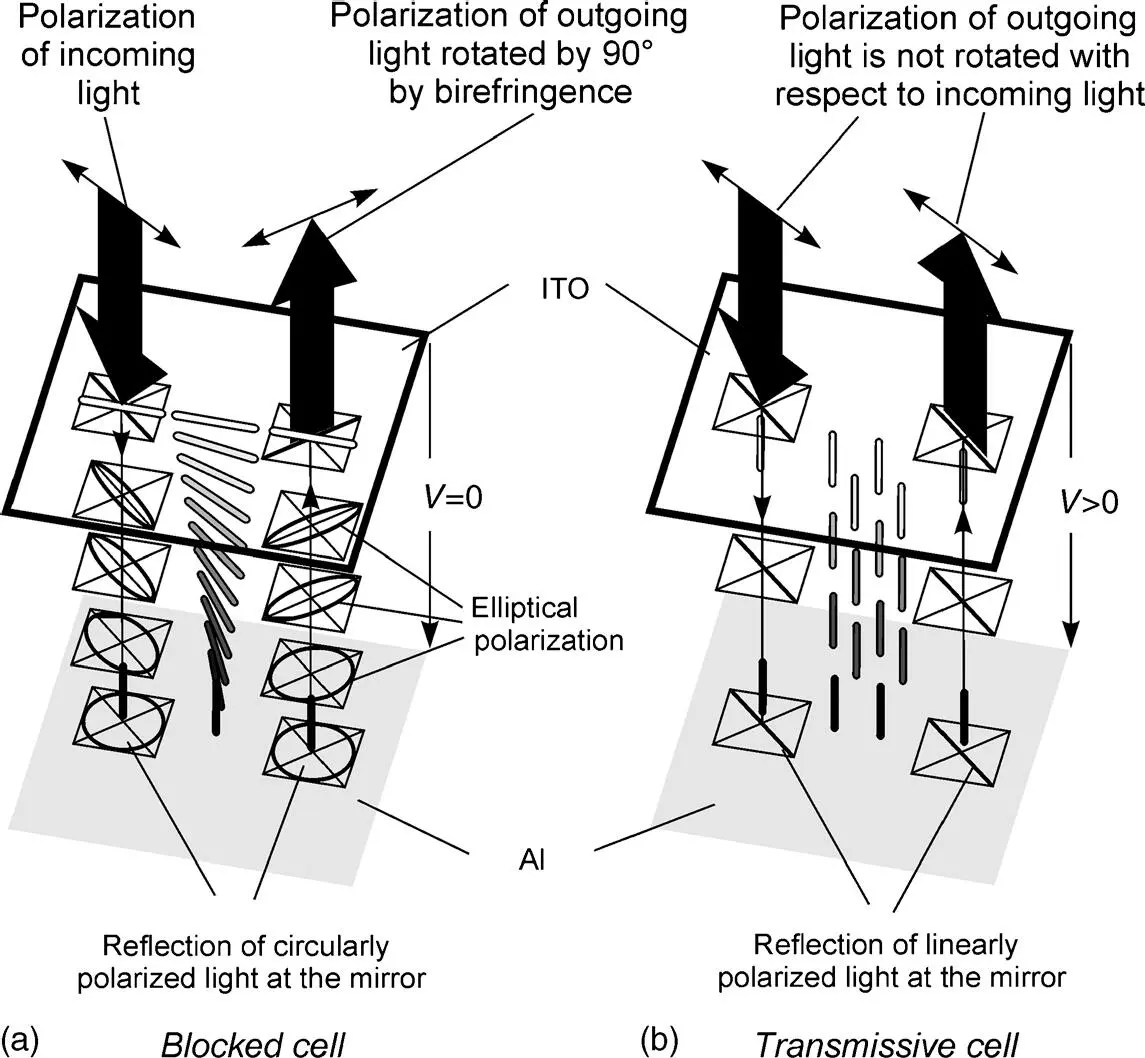
Figure 3.20 The operation of a reflective HAN cell. (a) In the field-free state; (b) if a voltage is applied
So far we have not dealt with the time needed to switch an LC cell from the black state to the white state, or vice versa. Dynamics of a cell are based on mechanical properties of the LC material, and will be discussed in Section 3.2.8. Some information on switching speed can, however, be derived from the field of directors. That’s how a very fast switching cell, the π cell, has been found (Bos and Koehler, 1984), as will be outlined later in this chapter.
The Fréedericksz cell and the TN cell exhibit a uniform alignment of the molecules with a pretilt α in the opposite direction on the substrates, as shown in Figure 3.21(a)for the on-state of the cell. After the electric field has been switched off, the molecules relax to the off-state, resulting in a low of LC material and a tilting of the molecules. The molecules around the centre of the cell are exposed to a torque, causing aback-flow of the material and trying to rotate them through a large angle to the position in the off-state. This slows down the switching process. Figure 3.21(b)depicts the pretilt of the π cell pointing in the same direction on both substrates. In this case, the molecules in the centre of the cell experience almost no torque while they relax into the off-stage. The angles by which the relaxing molecules have to be tilted are smaller, resulting in a much higher switching speed.
The phenomenon of a ‘back-flow’ causes the ‘optical bounce’ in the electro-optical response to a rectangular voltage in Figure 3.22(a), whereas the response of the π cell in Figure 3.22(b)does not exhibit the prolonged relaxation time. In a TN cell switching off takes, as a rule, 3 to 4 ms, whereas the π cell requires only around 1 ms. However, after 1 ms the relaxation is not yet completely finished, which may not be noticeable at a high enough switching frequency. If the uncompleted relaxation is disturbing, a holding voltage of around 2 V or a polymer stabilization (Vithana and Faris, 1997) arrests the relaxation.
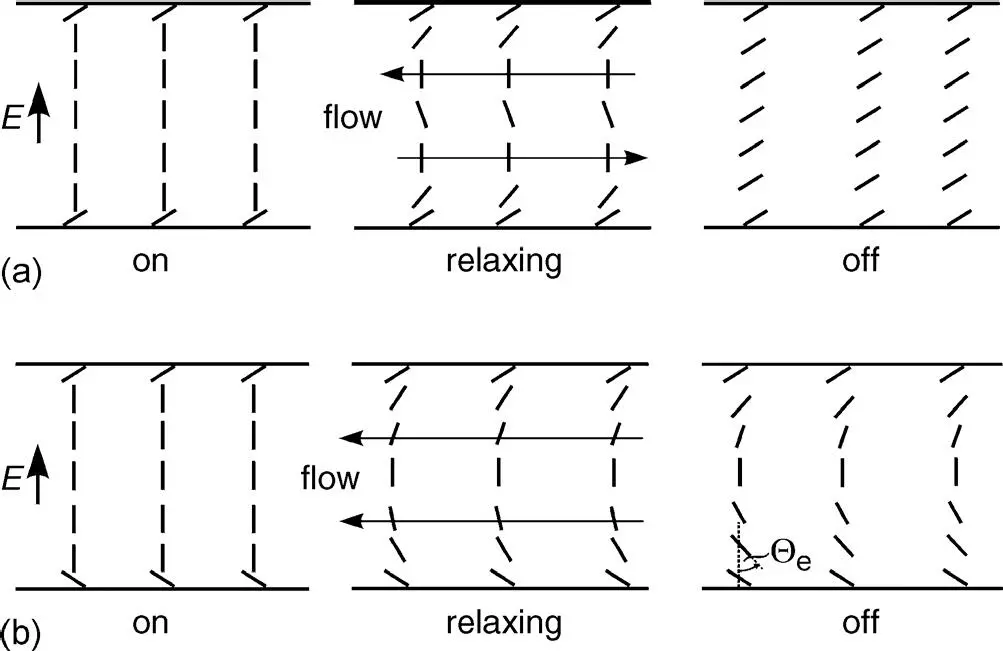
Figure 3.21 The pretilt angles and the relaxation to the off-state. (a) Of a TN cell; (b) of a π cell
As in the HAN cell, the optical anisotropy Δ n in the π cell for V LC= 0 changes along the z -axis, which is denoted by Δ n ( z ). As a consequence, the optical retardation R from the input at z = 0 to the output at z = d is
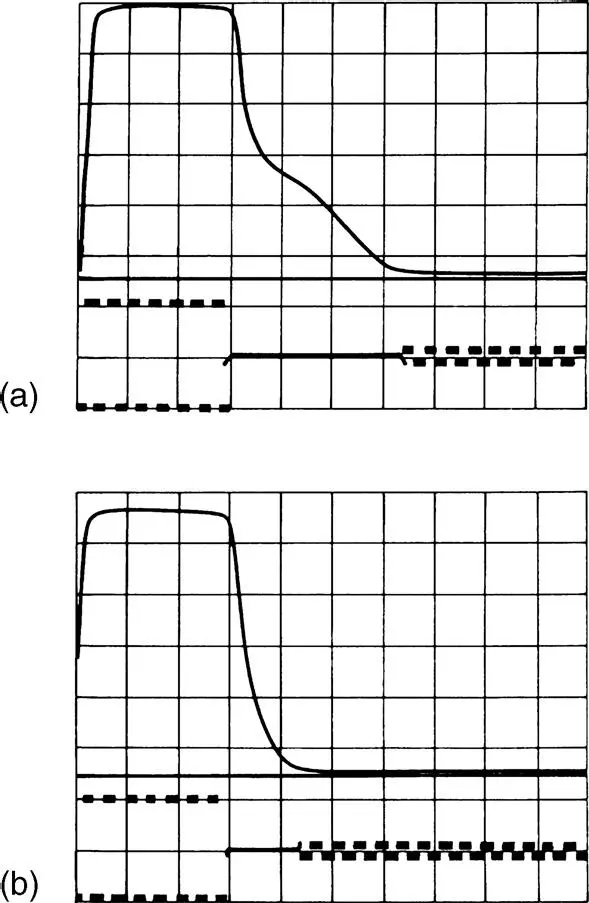
Figure 3.22 The electro-optical response to a square voltage pulse. (a) Of a TN cell with a prolonged relaxation; and (b) of a π cell with a fast relaxation
(3.98) 
where Δ n ( z ) depends upon the angle Θ ein Figure 3.21(b). We shall derive Δ n (Θ e) in Chapter 6, leading to Equation (6.29). For a π cell with crossed polarizers, the transmission T is obtained by a straightforward calculation with Jones vectors, yielding
(3.99) 
A normally white cell has the first transmission maximum at ( π / λ ) R = ( π /2), or
(3.100) 
corresponding to a λ/2-plate. We introduce an effective anisotropy Δ n efffor the entire optical path in the cell, which is given by
(3.101) 
providing, with Equation (3.100),
(3.102) 
The term Δ n effrenders this result similar to Equation (3.97).
The wide viewing angle inherent to the π cell is discussed in Section 6.3.2.
3.2.8 Switching dynamics of untwisted nematic LCDs
We assume that the LC molecules are anchored on the surface at z = 0 at an angle Θ 0to the normal and at z = d under the angle Θ d, as shown in Figure 3.23. In the field-free state the field of directors is defined by the equilibrium state with minimum free energy. After applying an electric field in the form of a step function the voltage V ( t ) across the cell has to exceed a threshold V thbefore the molecules are able to rotate in order to assume the position imposed by the field. The threshold is caused by the intermolecular forces, which first have to be overcome by the forces of the field. The transition to the new voltage imposed field of directors is called the Fréedericksz transition. The dynamic of this transition (Degen, 1980; Priestley, Wojtowicz and Sheng, 1979) is governed by the interaction between the electric torques forcing the directors into positions parallel for Δ ε > 0 or perpendicular for Δ ε < 0 to the electric field and the mechanical torques trying to restore the field-free state. These torques are the only mechanical influences if the molecules do not undergo a translatory movement. A magnetic field is as a rule not applied in LC applications. The transient between the states of the director field is calculated by adding all free energies, and by taking the functional first derivative with respect to the angle Θ in Figure 3.23. The torques are related to splay, twist and bend with the elastic constants K 11, K 22 , K 33and the rotational kinematic viscosity η , as well as to the dielectric torque dependent on Δ ε . For the derivation of the results we refer to special publications (Labrunie and Robert, 1973; Saito and Yamamoto, 1978). In Saito and Yamamoto (1978), expressions for the rise time T rand the decay time T dfor the reorientation of the LC molecules induced by a voltage step with amplitude V were derived. The results depend upon the tilt angles Θ 0and Θ dof the molecules. T rand T dtranslate directly in the rise time and the decay time of the luminance as it changes directly with the director field. The results for general angles Θ dand Θ 0are:
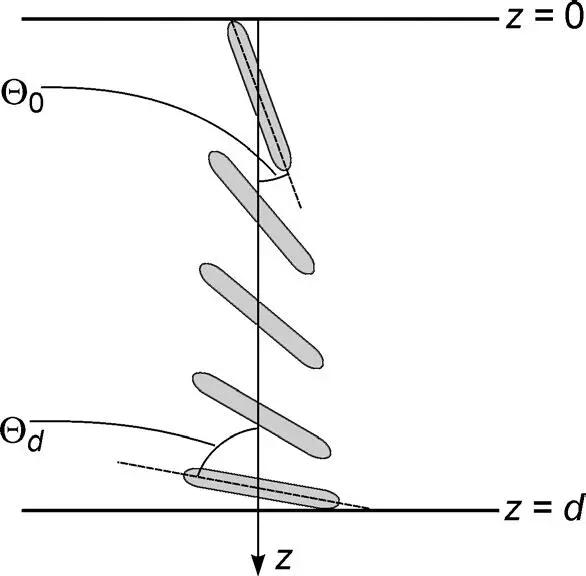
Figure 3.23 The anchoring of LC molecules at z = 0 and z = d
Читать дальше
